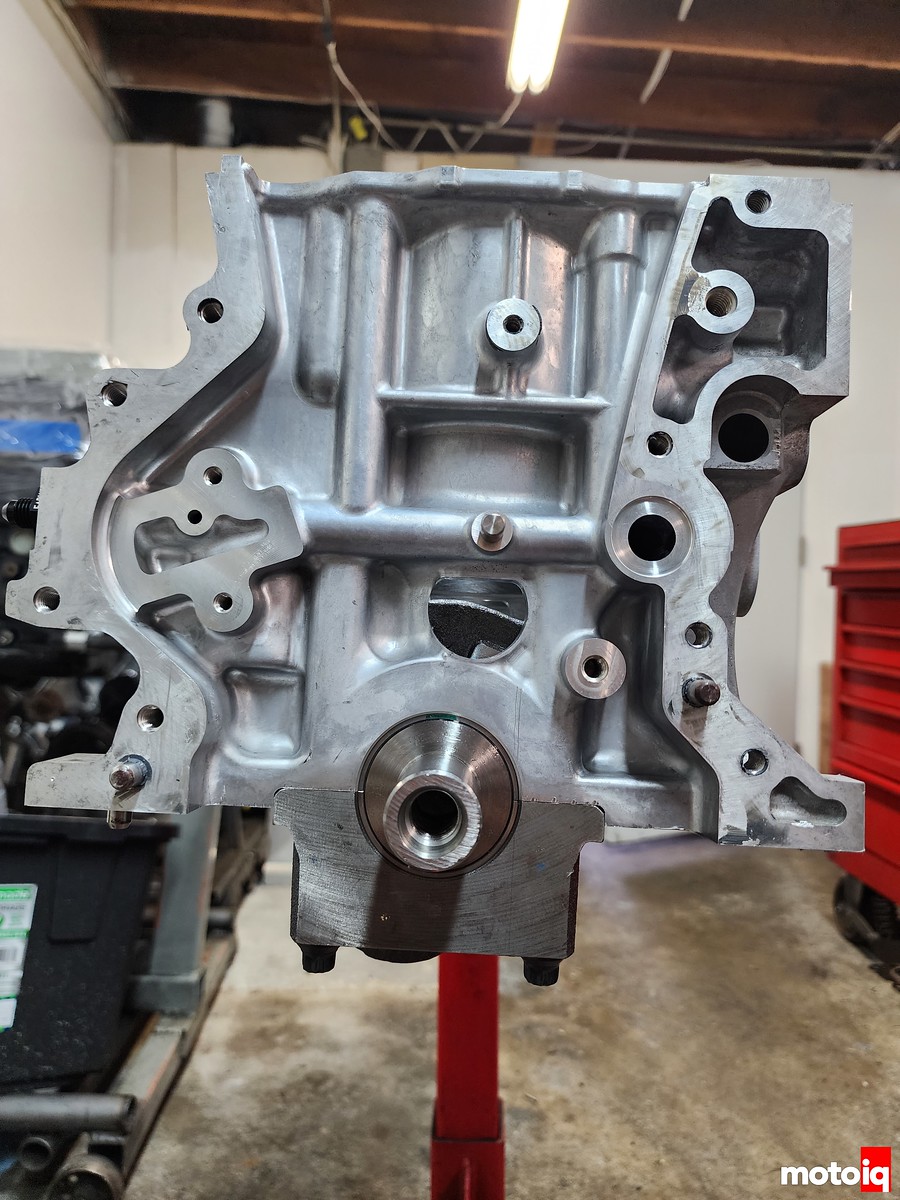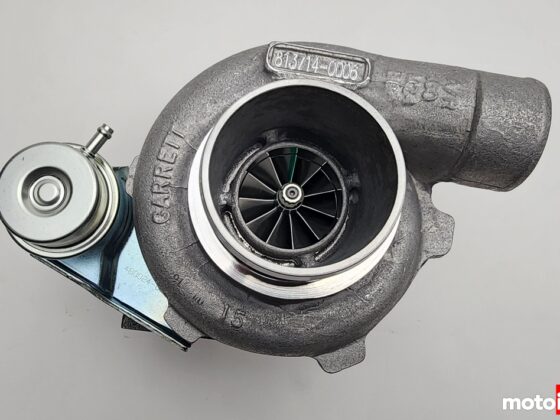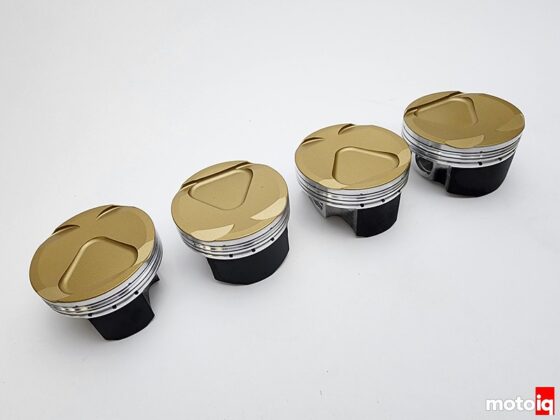
Looking at the crank more we can see it has zero journal overlap. This is not good for performance as having overlap greatly increases the strength of the crank. Although this is not an issue for this engine that was designed for smoothness, economy, low emissions, and good response, not to be a turbocharged monster! On a positive note, the crank journals have generous cheeks that give some degree of strength.

Another positive feature is that the engine features piston cooler oil squirters. These keep the pistons much cooler, important when having a high compression ratio on pump gas for both piston life and to reduce changes for detonation to occur. These also keep the piston pins and cylinder walls well-lubricated. All of this is going to transfer well for turbocharging. The turbo MR16DDT also has piston coolers.

Our crank has very small journals, especially for the rod bearings. This is great for reducing friction but not so good for load-bearing capacity or overall crank strength. This will also affect the aggressiveness of our power goals. If we were to develop this engine more, we would make a custom fully counterweighted crank with Honda K-Seres rod journal sizes. For the time being, the stock crank will have to suffice. We think we can still make some conservative but impressive gains with it.

A very interesting feature found on the MR20DD is that the crank is offset from the bore by quite a bit. This is done to reduce piston slap noise and to increase the piston’s dwell time at TDC, much like the reasons why piston pins are often offset on the piston. We have never seen this amount of crank offset in an engine before. We think that this is probably a good idea and will reduce friction and noise by quite a bit and also improve mechanical and volumetric efficiency to a small degree.




7 comments
I wouldnt´t worry too much about the unsupported main caps.
AMG M139 and BMW B58 have 2-bolt main caps without any girdles and they do just fine with one being the highest specific power 4-cyl ever made and the other being capable of 1000hp with bolt-ons.
Tiny main bolts ar a drawback though.
Interestingly the bore/stroke numbers (84/90.1) are also quite similar to the AMG 83/92 and BMW 82/94.6.
That goes with my understanding that a small cylinder bore with a long stroke almost always lends itself well to turbocharging. In part due to faster burn time.
Have you looked towards the MR16DDT oil pump assembly? No balance shafts and looks to be a straight swap to the MR20DD block. Also the MR16DDT comes with a girdle, which I’m sure with some machining would fit the MR20DD.
It’s not just the matter of two bolts, it’s the flimseyness of the caps and the register area of the caps. Due to the compressed time we didn’t investigate the Juke gridle but my thinking is it probably helps if it is adaptable. We just didnt have the time to have studs made and then machine and align bore the block.
Mike, you mentioned tight timeframe – is this a SEMA project? Doesn’t make any difference to me one way or the other, just curious.
stick around and find out!
Will do!
Very cool to see all this tech in a lowly Sentra. Subaru, why can’t you even do this on your “sport” engines?
I like how the piston pins are already showing slightly concerning wear patterns even at stock power level and not much mileage. I thought the connecting rods would be the real main underbuilt parts of the bottom end, but nope, turns out the whole bottom end is underbuilt. Oh, Nissan.